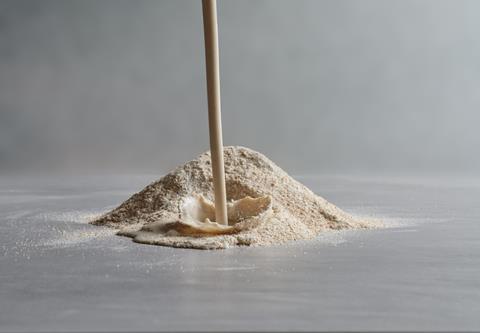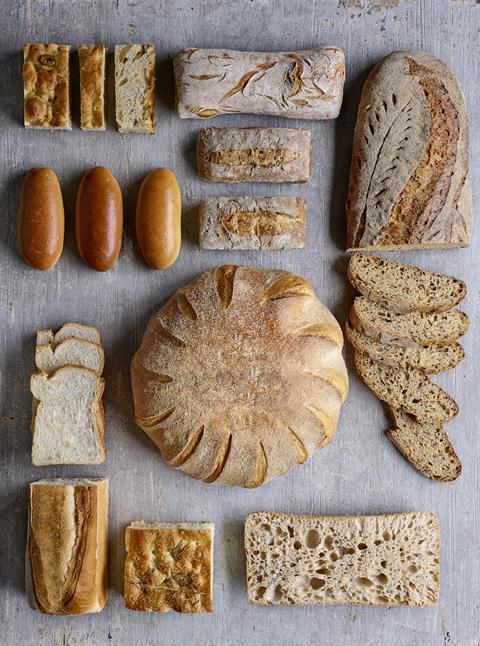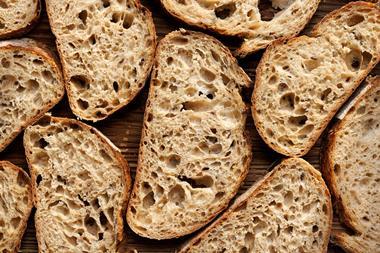While sourdough is known for its application in breads, its flavour potential could be used in a much wider range of applications, as Samantha Warner, senior R&D manager bakery at Puratos UK reports

The UK’s love for sourdough bread is reaching new heights, with this ancient bread-making technique evolving from artisanal niche to household staple. In the past five years alone, the word ‘sourdough’ has featured in 6% of all bakery launches, with a remarkable 38% increase in sourdough-containing products between 2018 and 2023 [Innova]. This surge isn’t limited to traditionally made loaves; innovative bakers are incorporating sourdough as an ingredient into everything from pastries to cakes. Initially drawn by its popularity and perceived healthiness, bakers are now starting to explore its other properties, namely sourdough’s remarkable ability to naturally enhance and diversify flavour through fermentation.
A world of naturally-powered flavours
At its core, sourdough is deceptively simple: flour, water and time. Sourdough fermentation is a natural process where wild yeasts and lactic acid bacteria turn flour and water into a living culture. This culture leavens the dough while breaking down complex carbohydrates and proteins, which can enhance both digestibility and nutrient availability. Fermentation is a trend in of itself. The fermented food and drinks segment has experienced exponential growth over the past decade and continues to gain favour. In fact, the value of the market is anticipated to rise by US$414bn between now and 2032 [Statista]. Imparting an array of natural yet impactful flavour profiles, it is easy to see why sourdough’s blossoming renaissance has been largely attributed to fermentation.

From subtle hints of banana or caramel to complex notes of toasted nuts and mature cheese, fermentation unlocks a spectrum of tastes that can captivate discerning consumers. This flavour alchemy rises from the interplay of wild yeasts and lactic acid bacteria within every sourdough starter. No two starters are identical, with each having its own unique mixture of microorganisms.
Different types of flours create different flavours but mapping all the biological activity in a sourdough remains extremely challenging. What bakers do know is that when the diverse microbes found within the starter ferment the flour, they produce a wide array of compounds that contribute to sourdough’s distinctive taste and aroma. There’s a growing understanding of how to manipulate variables like fermentation time, temperature and flour type to bring about specific flavours that suit different palates and applications – but there is much still to learn if bakers want to create targeted flavours every time.
The sourdough library: preserving flavours for posterity
To better understand the complexities of sourdough fermentation, researchers are turning to advanced scientific methods. Research at The Puratos Sourdough Library in Sankt Vith, Belgium, in partnership with Professor Marco Gobbetti, is at the forefront of this exploration. The library is a unique repository of over 150 sourdoughs from around the world. The vast collection serves as a research hub, supporting scientists to unravel the complex interplay between environment, ingredient and flavour development, to advance our understanding of fermentation and bread making. By safeguarding these diverse sourdoughs, the library preserves baking heritage and protects culinary traditions and techniques for future generations.

The collection enables researchers to analyse how diverse factors, including climate, geography and local ingredients, shape each sourdough’s unique microbial composition and resulting flavour profile. For example: investigations in the library have found that sourdoughs from Central European countries often exhibit strong cereal flavours, while those from other regions may lean more towards fruity or lactic notes. The rich diversity of sourdough flavours that the library’s research has uncovered is not just of academic interest — it aligns closely with the varied preferences of consumers.
Flavour variety proves to be the spice of life
The variety of sourdough flavours possible is matched by a consumer appetite for diverse tastes. A consumer study of 100 panellists sampling six different sourdough profiles found that there was a spectrum of preferences among consumers. The conclusion was that there’s no clear stand-out favourite flavour for sourdough baked goods – instead, offering a variety of taste profiles and formulations would better encourage consumers to purchase.

Although sourdough is best known in relation to bread-making, it’s surprisingly versatile, as the UK’s innovative bakers are discovering. A sourdough croissant with a barely perceptible tang can add depth to buttery layers, while a brownie with sourdough might leverage the fermentation process to intensify chocolate flavours naturally. Sourdough’s potential in savoury applications extends beyond creamy or sour notes; breads can be developed to have ‘smoked sausage’ flavours (meat free!), to elevate charcuterie boards and complement hearty soups. Meanwhile, a sourdough pizza crust with a slight nutty undertone, achieved by incorporating ancient grains into the fermentation process, would balance out the acidity of hard cheese. With such a wide array of potential applications, sourdough presents a significant opportunity for bakers and food manufacturers to gain competitive advantage with innovative products that meet diverse consumer preferences.
The future of flavour is fermented
As consumers increasingly gravitate towards natural flavours and clean-label products [Mintel], the growing understanding of sourdough fermentation as a natural flavour enhancer comes at an opportune moment. Bakers can create products that not only taste exceptional, but also meet consumer preferences for products that are free from flavourings. In a market increasingly focused on naturalness and traditional processes, sourdough also offers a compelling story of craftmanship and process mastery. As our understanding of fermentation’s role in flavour development continues to grow, so too will the potential for sourdough to revolutionise the baking industry.
For bakers looking to explore the potential of sourdough’s flavour-enhancing capabilities, Puratos offers a range of solutions. From living sourdoughs to stabilised options, our products can help you create unique, flavourful baked goods that meet the evolving tastes of today’s consumers. To learn more, visit its Sourdough Solutions for Bakers page.




































